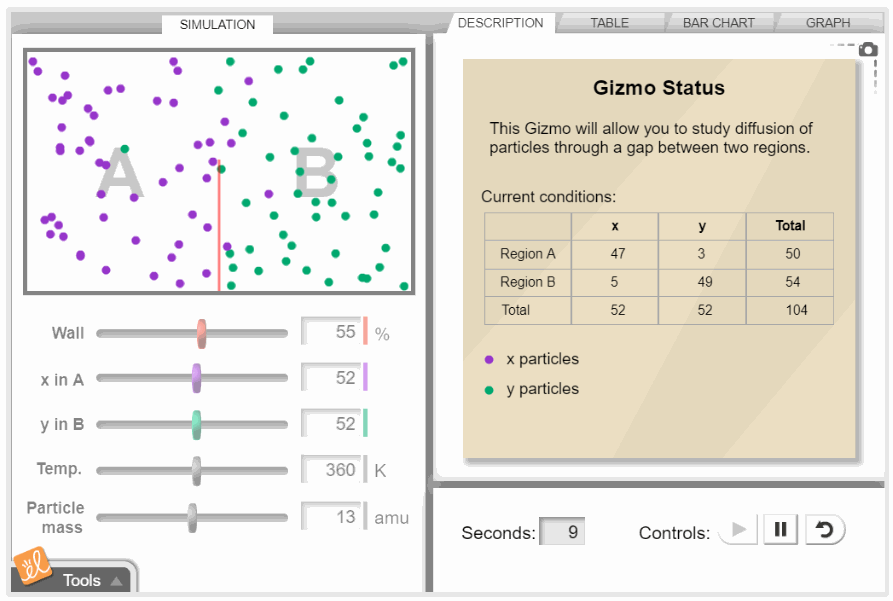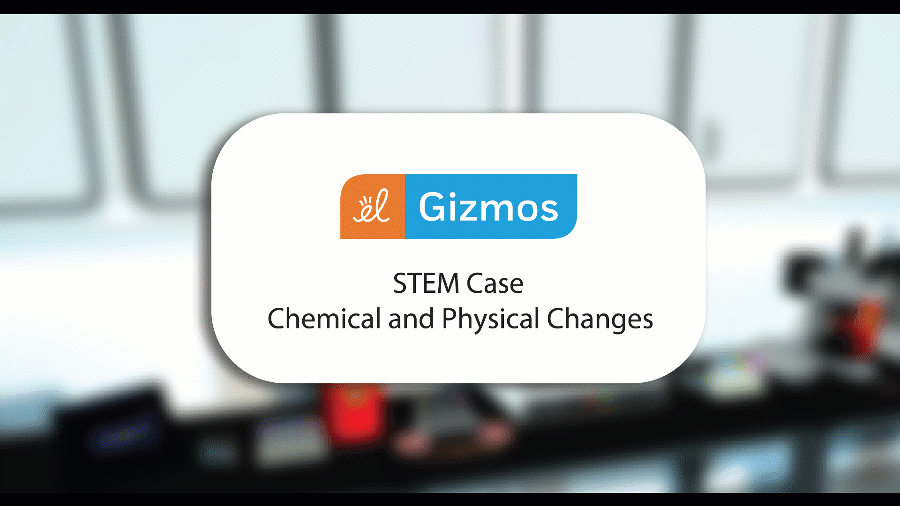
Understanding chemistry opens the world to students because it is all around them. It’s in cooking and medicine. Chemistry teaches students why ice floats in water and what causes leaves to turn colors. It touches all aspects of students' daily lives, making it relatable and accessible.
Why is chemistry important for students?
Want to help students learn more about how the world around them works? Look to chemistry activities! Chemistry lessons offer students chances for scientific thinking, problem-solving, time management, and organization while teaching a wide range of topics, from matter to chemical bonding and math.
Real-world chemistry connections
Adolescent students are still developing the mental capability for abstract thought. ExploreLearning Learning Designer Carrie Adler said, “They need support in visualizing and manipulating concepts and interactions in chemistry that occur at scales too small to see. Physical models and virtual simulations, like Gizmos and STEM Cases, help to make these abstract concepts more concrete for students.”
Real-world connections help students understand how chemistry is relevant to their lives. For example, bring chemistry to a discussion about how hand sanitizer works to control the spread of germs. How about the clean drinking water in their favorite water bottles? Thanks to chemistry, even the clothes students wear are made of more comfortable and durable fabrics.
Building career foundations
Chemistry is also a great conversation starter for career exploration. Through a virtual career day, inspire students to investigate the different roles of scientists and help them see themselves in future STEM careers.
10 engaging ideas for teaching chemistry
Chemistry lesson plans should be as varied as chemistry itself! The options are unlimited because chemistry is the study of matter—and everything is made of matter. Take a look at these strategies for teaching chemistry.
- Introduction and warm-up: Start class with a review activity for a warm-up, a connection to prior learning, or even a discrepant event, such as a demonstration that produces an unexpected outcome, to get students thinking about the upcoming lesson.
- Communicate in science: Communication skills for chemistry activities require defending responses or claims with data (evidence) and reasoning or having students present and argue their opinions with their peers. Many Gizmos have CER (claim, evidence, reasoning) prompts in the supplementary lesson materials.
- Whiteboards: Students can use whiteboards and dry-erase markers for problem-solving. Certified Instructor Jon Pepper has whiteboards all over the walls of his room so students can get up and problem-solve in pairs. “Students are willing to take more risks when having fun, and problem-solving often works better in pairs,” he said.
- Connections to prior knowledge: Introduce the concepts of inquiry-based experimental design, communicating laboratory procedures, and data processing and analysis using content that’s familiar to students. Pepper uses the Diffusion Gizmo because his students learned about diffusion the previous school year. “They are familiar with the concept, and the Gizmo provides a great connection to learning about the factors that affect the motion of particles,” he said. “Additionally, since this Gizmo is super open-ended, students can choose which variables to manipulate, how to manipulate them, and which variables they wish to measure.”

- Student roles: Involve students in the chemistry experiments by assigning roles such as spokesperson (group leader and speaker), facilitator (organizer of procedures), materials manager (organizer of lab supplies), and motivator (group cheerleader). Rotate the roles for different experiments so everyone gets a chance for each one.
- Visualization: Chemistry can be challenging to grasp because students can’t always see the processes. Virtual labs allow students to visualize and experiment as they develop hypotheses and draw conclusions.
- Real-world connections: When lessons are relatable, students are interested. “Even though I'm at the high school level, I love the Chemical and Physical Changes STEM Case (middle school level). The kids love solving the gold-plating question, and they really like the real-world connection of how Interpol broke up a counterfeit ring using the same techniques as the Gizmo,” said Pepper. “I also use this for authentic assessment – asking students to solve problems like determining the proper isotope for fossil dating based on a table of information, trying to figure out how the burning of magnesium "violates" the law of conservation of mass, or determining the 'best" material to use as road salt to show mastery of colligative properties.”

- Gamification: Pepper said, “Although a lot of chemistry is conceptual knowledge, there are a few things that I expect students to have to memorize, so I try to gamify this as much as possible. Examples include having students create bingo boards to play polyatomic ion bingo or a "dating game" where students as cations have to match up with students as anions to create chemical bonds.”
- 5E approach: The 5E Model asks students to engage, explore, explain, elaborate, and evaluate as they investigate the foundations and principles of chemistry. Creating chemistry lessons with this approach brings function and flexibility to the class.
Flipped classroom: This strategy lets teachers glimpse students’ thought processes and possible misconceptions before diving into assignments. Teachers provide readings and video lectures for students to view outside of class or for homework, saving active learning for class time.
Enhance chemistry understanding with virtual labs
Teaching chemistry with virtual labs allows students to see things that might otherwise be unobservable. Students get the chance to analyze chemistry applications in daily life and dig deeper into more complex concepts. Gizmos Chemistry Collection is the perfect place to start exploring!
Haven’t tried Gizmos yet? Now is the time to take a free trial!